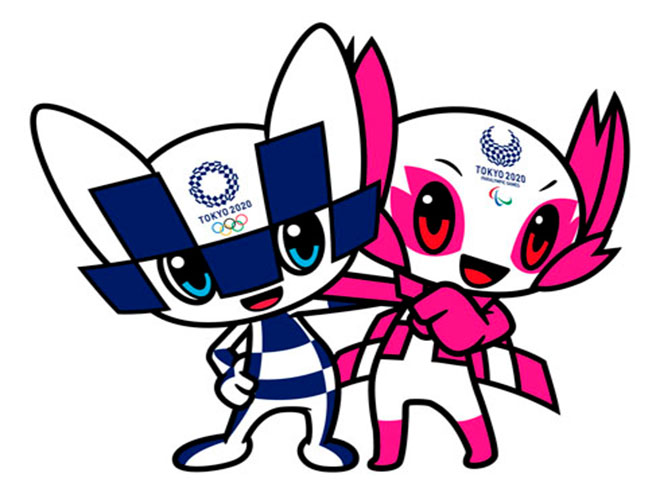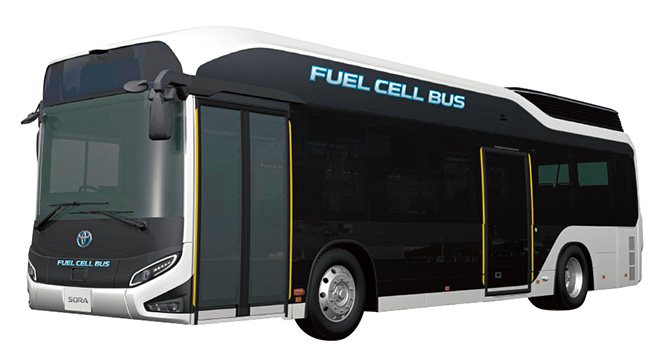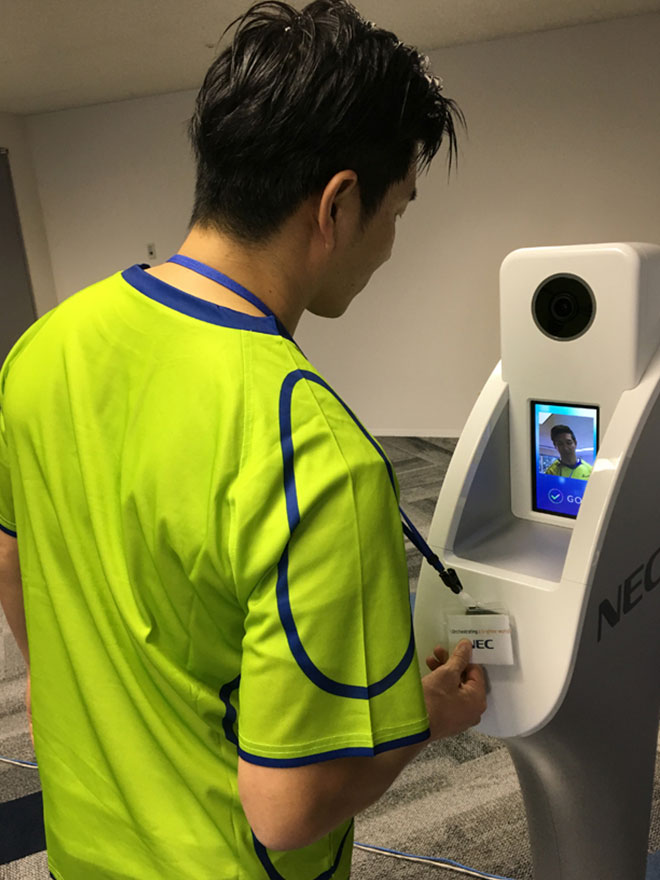niponica is a web magazine that introduces modern Japan to people all over the world.
2019 NO.27
The Olympics Are Coming to Tokyo

Technologies to Support the Tokyo 2020 Games
This article presents various Japanese technologies that will welcome, entertain, and assist athletes, spectators, organizing staff and everyone else involved with the Olympic and Paralympic Games Tokyo 2020.
The name of the official mascot of the Olympic Games Tokyo 2020, Miraitowa (left), is a combination of the Japanese words mirai (future) and towa (eternity). The mascot for the Tokyo 2020 Paralympic Games, Someity (right), is named after Somei yoshino, Japan’s most popular variety of cherry blossom, and the name also echoes the English phrase “so mighty.”
©Tokyo 2020
Fuel cell buses bringing the future to Tokyo
Fuel cell buses
These eco-friendly buses are powered by fuel cells, which generate electricity via a chemical reaction between the hydrogen in the tank and oxygen in the atmosphere. They do not emit carbon dioxide or air pollutants. They also offer smooth acceleration and quiet operation for maximum passenger comfort. More than 100 fuel cell buses will be introduced by 2020, mainly in Tokyo, and the plan is to have them operating in the area of Haneda Airport during the games. Thanks to Tokyo 2020, the vehicles of the future will soon be part of everyday life in Japan.
(Information current as of July 2019)
A racing wheelchair that forms a perfect connection with the athlete and runs like an F1 car
CARBON GPX is a racing wheelchair for the track-and-field events designed and manufactured by a company that originally specialized in motorcycle engineering. Manually customized with attention to detail by skilled engineers using their extensive racing experience to respond to requests and match the physical condition of each athlete, CARBON GPX wheelchairs have captured the hearts of Paralympic athletes all over the world. The frame of the wheelchair is made of a carbon fiber and resin composite to achieve optimum weight reduction, enabling top athletes to reach maximum speeds of over 35km per hour.
Tokyo 2020 mascot robots welcome athletes and guests to the venues
(Photo: Toyota Motor Corporation)
©Tokyo 2020
A robot equipped with a camera mounted on its head will recognize people approaching, then will use the expression of its eyes and the natural movements produced by its miniature joint units to communicate while expressing a variety of “emotions.” Engineers are exploring ways to link it with other robots in a remote location.
Precise and swift Face recognition system
(Photo: NEC Corporation)
The Tokyo 2020 Games will be the first in history to use a face recognition system to conduct identity verification. An accredited person just stands in front of the camera and holds an ID card with an embedded IC up to the machine at the gate. The system then links the face and card data with the pre-registered face image to complete identity verification. The manufacturer has implemented more than 1,000 systems with biometric authentication techniques including facial images, iris scans, finger prints, palm patterns, finger veins, voice and otoacoustics (identification using sounds that cannot be distinguished by the human ear) in over 70 countries and regions around the globe. The system’s world-class precision will secure faster and more accurate identity verification.
Power-assisting suit reduces heavy labor load during Tokyo 2020
ATOUN MODEL Y
(Photo: Panasonic Corporation)
Equipped with an angle sensor, a motor, and other outstanding Japanese robotic technologies, this suit is easy to put on and reduces the burden on the wearer’s lower back during work by up to approximately 40%. It is expected to assist event officials and staff in their tasks of carrying food or bags of waste, as well as loading luggage onto buses. The suit has already been utilized in construction work and nursing care, and its functions have been tested and verified.
Assistive robots serve wheelchair users in the audience
HSR, DSR
(Photos: Toyota Motor Corporation)
One of Japan’s most prominent automakers, which has developed a diverse line of companion robots, announced a robot designed to provide assistance to wheelchair users at Tokyo 2020. The robot can extend an arm from its compact body to carry food or pick up items from the ground. Wheelchair users can also order drinks from their seats and have the robot deliver them. The abilities of this robot will enable spectators in wheelchairs to enjoy the games to their heart’s content.









